| |
|
07.
 | Sculpture sequence : La Pieta
| Sculpture sequence : La Pieta |
| |
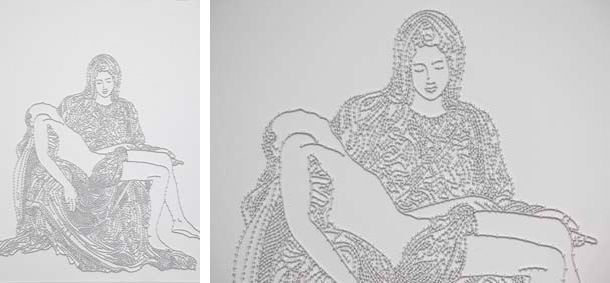
'' In Bas-Relief La Pieta, the world’s most famous mother and child
are rendered out of coaxial antenna cable, a combination that
alludes to the mass dissemination of religion. ''
Nuit Banai, Time Out New York, 2007
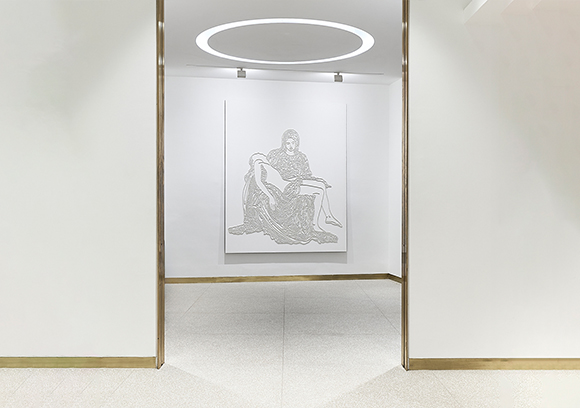
La Pieta
Exhibition view from If you don't know me by now, Ceysson & Bénétière, 2024, Lyon.
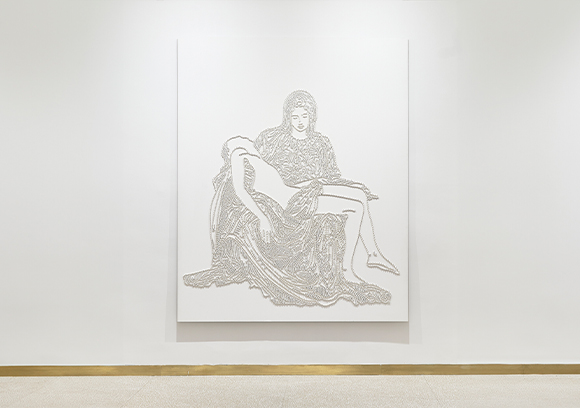
La Pieta
Exhibition view from If you don't know me by now, Ceysson & Bénétière, 2024, Lyon.
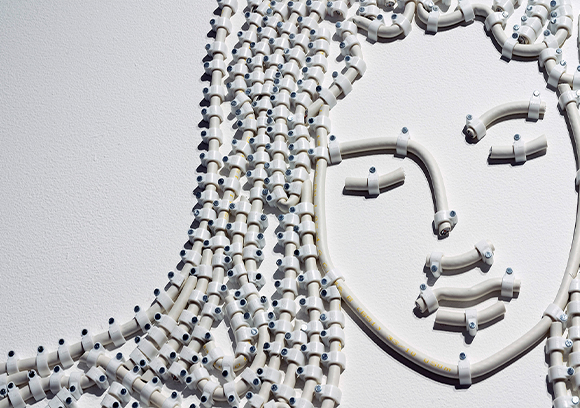
La Pieta
Exhibition view from If you don't know me by now, Ceysson & Bénétière, 2024, Lyon.
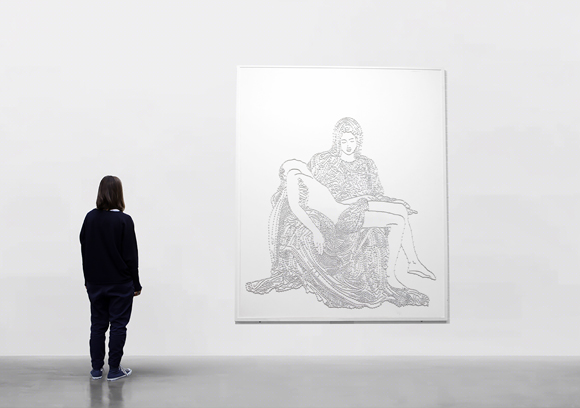
La Pieta
Exhibition view from #Cometogether, Edge of Arabia, 2012, London.
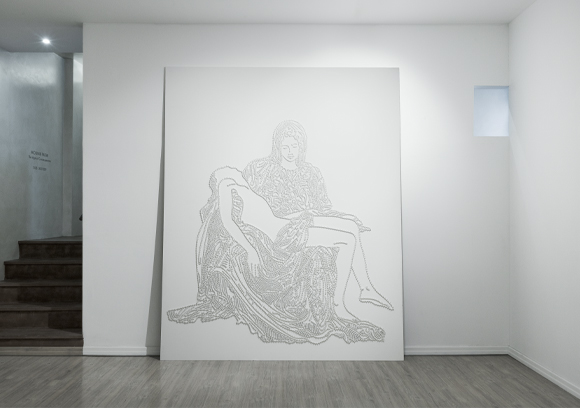
La Pieta
Exhibition view from #Cometogether, Edge of Arabia, 2012, London.
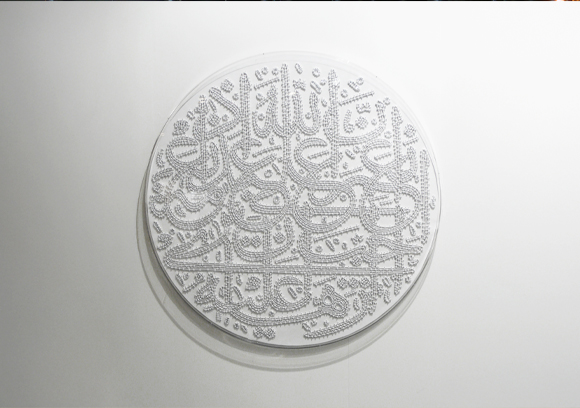
The Machinery
Exhibition view from Art Brussels, Conrads Gallery, 2010, Brussels.
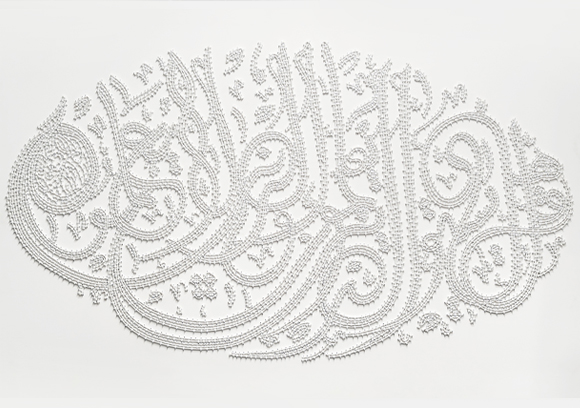
People know, people don't know
Exhibition view from Jusqu'au bout de la poussière, Espace des arts, 2004, Colomiers.
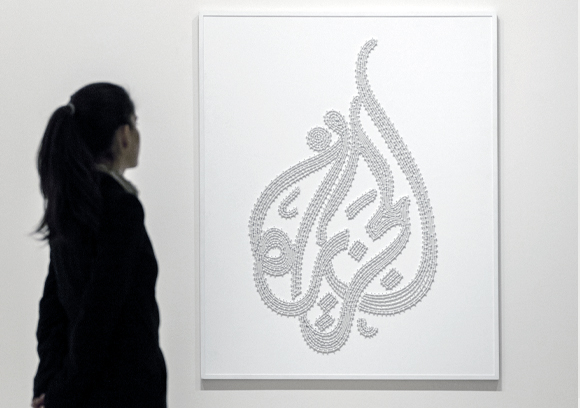
Al Jazeera
xhibition view from Looking at the World Around You, Santander Art Gallery, 2016, Madrid.
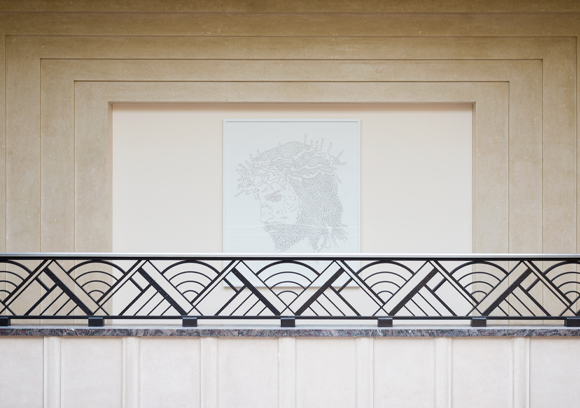
Presumed Innocent
Exhibition view from Icons, Fondation Boghossian, 2021, Brussels.
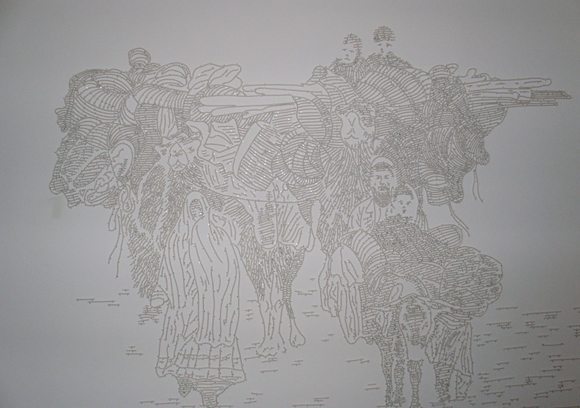
Kabul
Exhibition view from Comprendra bien qui comprendra le dernier, CAC Le Parvis, 2004, Ibos.
|
|
2007, coaxial antenna cable on wood panel, staples, 150 x 250 cm.
Exhibition view from Fuck Architects : Chapter I, Lombard-Freid Projects, 2007, New York.
Courtesy of the artist and Ceysson & Bénétière, Paris.
Ed. of 5 + 1 A.P.
|
|
|
| Collection of Centre Pompidou, Paris
Collection of Nadour, Krefeld
Collection of Farjam Foundation, Saudi Arabia
« La Piéta » est une sculpture réalisée au moyen de sections assemblées de câbles d'antenne fixés à un panneau de bois blanc, matériau utilisé dans la transmission des images et de l'information jusqu'à la fin des années 90 et éléments récurrents des œuvres de mounir fatmi. La sculpture est une reproduction de l'interprétation du thème artistique de la Vierge de Pitié appartenant à l'iconographie chrétienne - son modèle est la sculpture réalisée par Michel-Ange à la fin du XVe siècle, devenue une des œuvres d'art les plus célèbres de tous les temps. Elle représente une scène de déploration, avec la Vierge Marie en mater dolorosa qui tient sur ses genoux le corps du Christ descendu de la croix. La critique relève régulièrement un aspect particulier de l'interprétation de Michel Ange et de son style en général : sa représentation d'une Vierge Marie jeune s'inscrit dans une œuvre qui associe beauté païenne et religieux.
« La Piéta » de mounir fatmi explore également les rapports entre le profane et le sacré, entre art et religion d'une part, et entre la religion et les formes contemporaines d'organisations sociales, sociétés de l'information, de la communication et des médias. L'iconographie renaissante de Michel Ange est-elle devenue un lieu commun de l'art, un simple motif plastique, ou exprime-t-elle encore quelque chose de nos jours? L'œuvre interroge le devenir des thèmes de la souffrance et de la mort dans nos sociétés contemporaines et leur traitement.
L'esthétique de « La Piéta » coaxiale procède par recouvrement et effacement : elle propose un jeu sur la perception et la reconnaissance visuelle à partir d'un motif classique, devenu lieu commun artistique. La figure emblématique habituellement aisément identifiable devient ici une composition blanc sur blanc, à la visibilité problématique et nécessitant un effort de discernement. La sculpture observe l'évanescence du motif et du signe à connotation religieuse, et la recomposition de significations anciennes dans l'univers contemporain. Elle élabore un système d'interactions et de connexions avec ses câbles coaxiaux : entre le passé et le contemporain, entre le religieux et le profane, entre les techniques de l'artisanat religieux, le bas-relief, et les techniques de l'art contemporain, inspirées du dripping, du all over et du matiérisme.
« La Piéta » propose une double relecture du thème artistique et de la scène de déploration religieuse et de la société des NTIC et pose une équivalence entre religion, ce qui étymologiquement relie (les individus entre eux, et les individus au divin) et les NTIC, qui relient les individus entre eux en multipliant les moyens de communication et qui participent à la création d'une religion de la communication. L'œuvre évoque un lien dans la douleur : une souffrance s'exprime au sein de cette nouvelle religion des NTIC, souffrance dont l'origine est - comme dans la scène classique - une rupture de la communication. A force d'accumuler les informations, la société de l'information interrompt la communications.
La sculpture affirme finalement sa conception des rapports entre art et religion. La Renaissance artistique est un formidable appareil de propagande religieuse qui a fait appel aux artistes. Et pourtant l'interprétation de Michel Ange présente une série d'écarts discrets par rapport aux prescriptions des autorités religieuses et évite de se soumettre à leur pouvoir. Il en va de même pour la stratégie artistique suivie par mounir fatmi, qui met à distance les pouvoirs de l'image et de la société de l'information afin de diminuer leur emprise.
Studio Fatmi, Février 2017.
|
|
« Pieta » is a sculpture created with assembled sections of antenna cable fixed on a white wood panel, a material used for the transmission of images and information until the late 1990s and a recurrent element in mounir fatmi’s work. The sculpture is a reproduction of the interpretation of the artistic theme of the Pieta, which belongs to Christian iconography – its model is the late 15th century sculpture by Michelangelo, which has become one of the most famous works of art of all time. It represents a scene of deploration, with Virgin Mary as a Mater Dolorosa holding in her lap the body of Christ taken down from the cross. Art critics frequently highlight a particular aspect of Michelangelo’s interpretation and of his style in general: his representation of a young Virgin Mary makes this a work of art that combines pagan beauty and religion.
mounir fatmi’s « Pieta » also explores the relation between the profane and the sacred, between art and religion on one hand, and between religion and today’s forms of social organizations on the other hand; information and the communication and media society. Has Michelangelo’s Renaissance iconography become an artistic cliché, nothing more than a formal motif, or does it still express something today? The work poses the question of the evolution of the themes of suffering and death in today’s societies, and the way they are considered. ?
The esthetic of the coaxial « Pieta » employs the techniques of covering and erasing: it offers a play on perception and visual recognition through a classic motif that has become an artistic cliché. The emblematic and usually easily recognizable figure here becomes a white composition on a white background, with minimal visibility and requiring an effort to be discerned. The sculpture looks at the evanescence of the motif and the sign with religious connotations and at the recomposing of ancient significations in a contemporary context. It creates a system of interactions and connections with its coaxial cables: between the past and the present, between the religious and the profane and between the techniques of religious craftsmanship such as bas-relief, and those of contemporary art inspired by dripping, all-over and matterism. ?
« Pieta » offers a double re-interpretation of the artistic theme of the religious scene of deploration and of the digital society, and poses an equivalence between religion, etymologically meaning something that connects (people to each other and individuals to the divine) and digital technologies, which connect individuals by offering multiple means of communication and play an important part in the advent of a religion of communication. The piece evokes a painfully established connection: suffering can be expressed within this new digital religion, a suffering whose origin is – just like in the classic religious scene – an interruption of communication. Through the accumulation of information, the information society interrupts communications.
Lastly, the sculpture re-affirms the artist’s conception of the relations between art and religion. The artistic Renaissance was a formidable tool for religious propaganda that called upon artists. Yet Michelangelo’s interpretation comprises a series of discrete deviances from the prescriptions of religious authorities, thus refusing to submit to their power. The same goes for the artistic strategy followed by mounir fatmi, which keeps the powers of images and of the information society at a distance in order to reduce their influence.
Studio Fatmi, February 2017. |
|
|
|